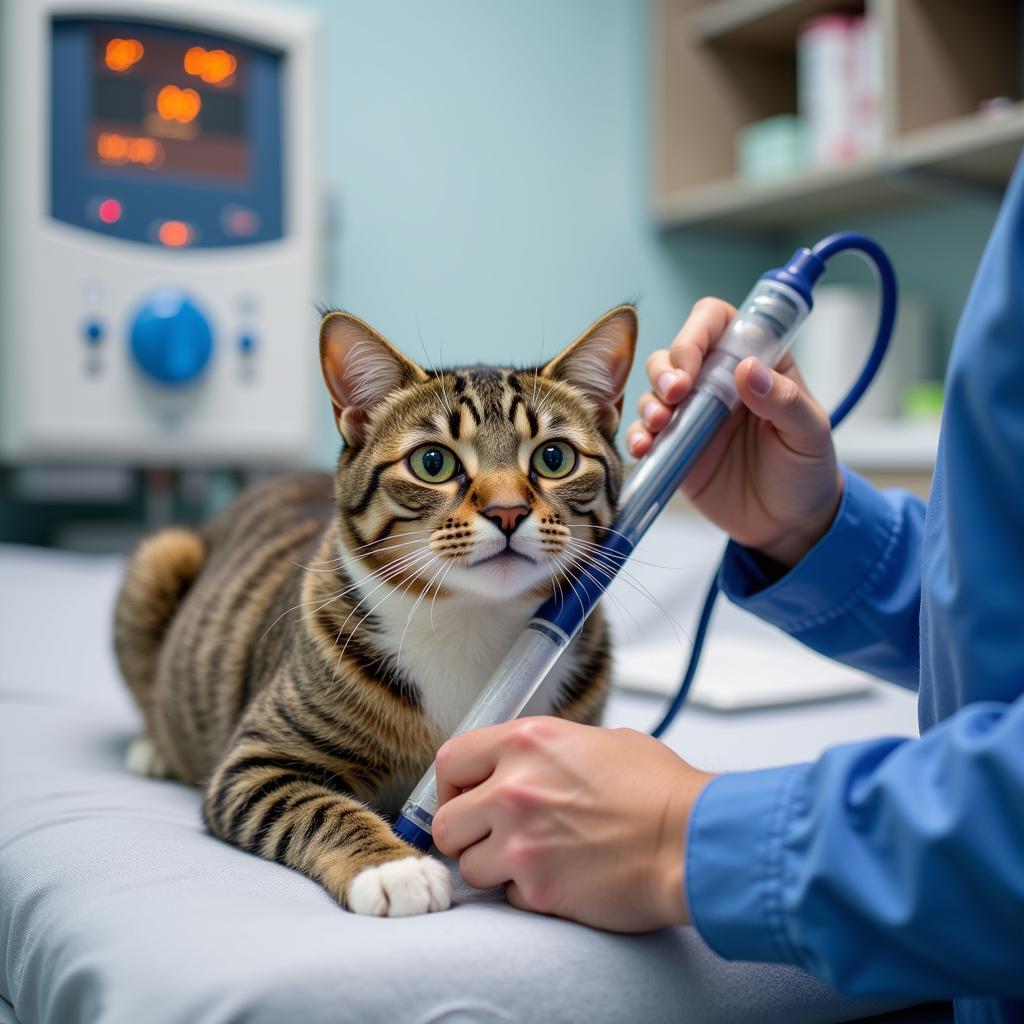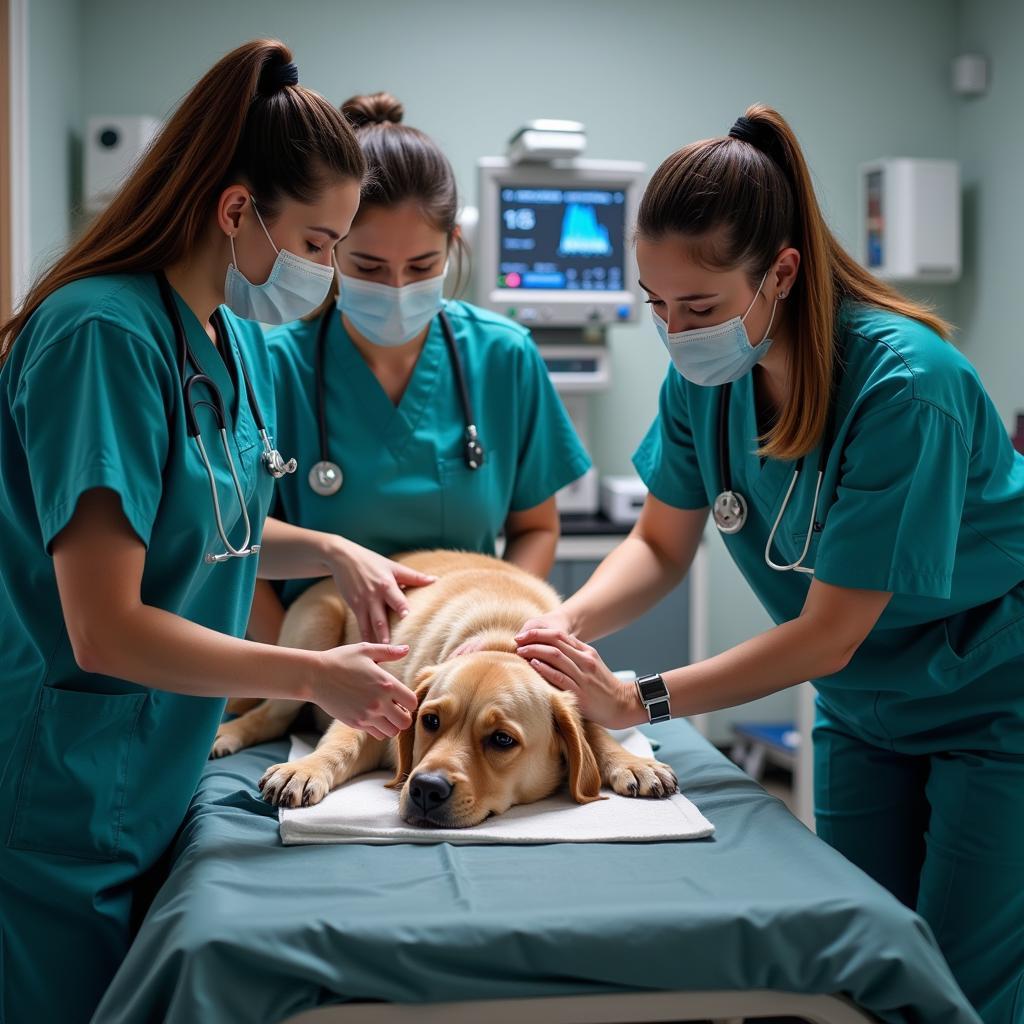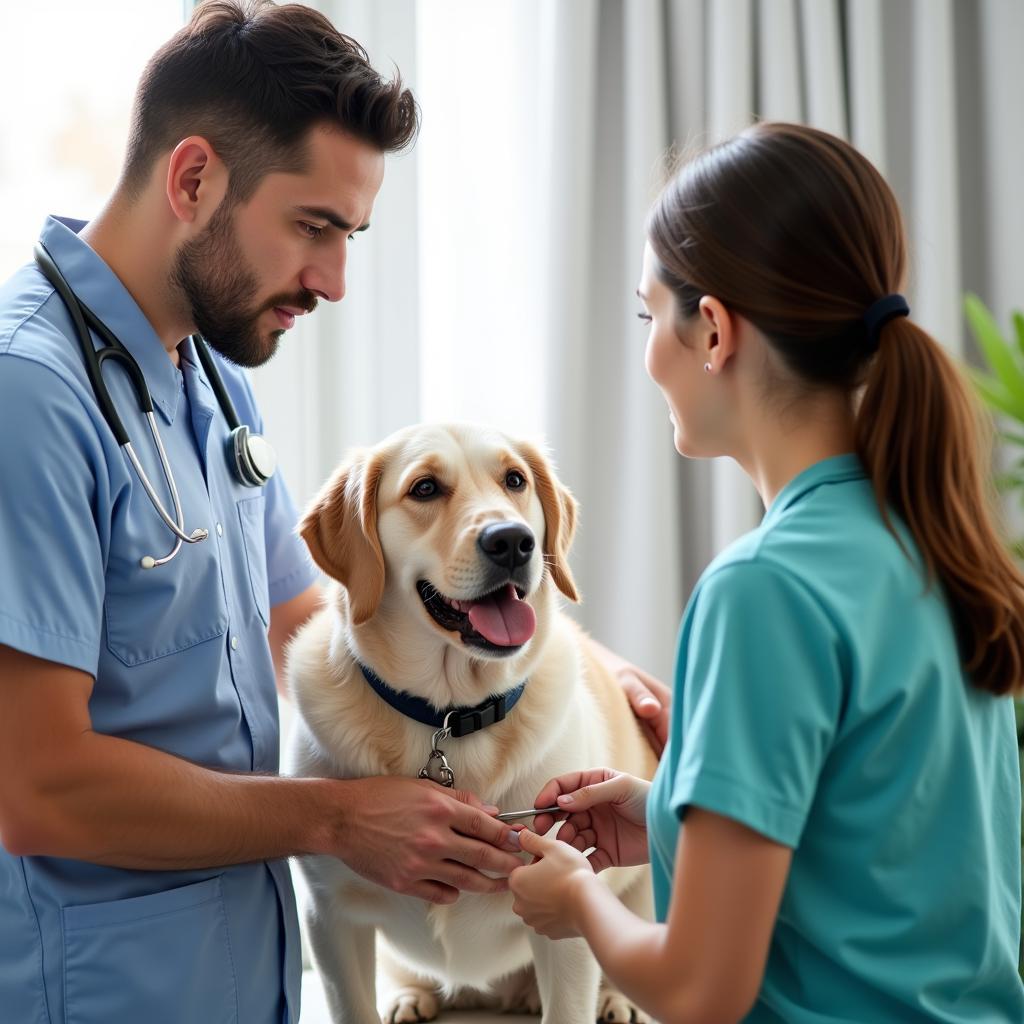When your beloved pet is facing a health crisis, you want to ensure they receive the best possible care. Finding an Oxygen Veterinary Hospital equipped to handle respiratory emergencies can be the difference between life and death for your furry friend. This comprehensive guide will help you navigate this critical search and make informed decisions for your pet’s well-being.
 Oxygen Therapy for Pets
Oxygen Therapy for Pets
Understanding the Importance of Oxygen in Veterinary Medicine
Just like humans, animals need oxygen to survive. When pets experience difficulty breathing, their bodies are deprived of this vital element, leading to a condition called hypoxia. Hypoxia can damage vital organs and quickly become life-threatening if not addressed promptly. An oxygen veterinary hospital is specially equipped to provide supplemental oxygen to pets suffering from respiratory distress.
Conditions that might require oxygen therapy include:
- Trauma: Accidents, falls, and fights can lead to lung injuries, hindering breathing.
- Respiratory Infections: Pneumonia, kennel cough, and other infections can inflame the airways, making it difficult for pets to breathe.
- Heart Conditions: Heart failure and other cardiac issues can impact lung function, requiring oxygen support.
- Asthma and Allergies: Allergic reactions and asthma attacks can cause airway constriction, necessitating oxygen therapy.
- Heatstroke: Overheating can lead to respiratory distress, requiring immediate oxygen supplementation.
What to Expect at an Oxygen Veterinary Hospital
 Veterinary Team Providing Emergency Care
Veterinary Team Providing Emergency Care
Oxygen veterinary hospitals have specialized equipment and trained staff to provide life-saving oxygen therapy to pets. Here’s what you can expect:
- Oxygen cages and masks: These controlled environments deliver a consistent flow of oxygen to your pet.
- Pulse oximetry: This non-invasive technique measures your pet’s blood oxygen levels, helping veterinarians monitor their progress.
- Blood gas analysis: This test provides detailed information about your pet’s oxygen and carbon dioxide levels, guiding treatment decisions.
In addition to oxygen therapy, the veterinary team may perform other diagnostic tests and administer medications to address the underlying cause of your pet’s breathing difficulties.
Choosing the Right Oxygen Veterinary Hospital for Your Pet
 Concerned Pet Owner Talking to Veterinarian
Concerned Pet Owner Talking to Veterinarian
When your pet’s health is at stake, every second counts. Here are some essential factors to consider when choosing an oxygen veterinary hospital:
- 24/7 Availability: Emergencies can happen at any time. Opt for a facility with round-the-clock emergency services, like a 24 hour animal hospital springfield ma or an emergency pet hospital san francisco.
- Experience and Expertise: Look for hospitals with a dedicated team experienced in handling respiratory emergencies and administering oxygen therapy. Consider inquiring about their success rates and expertise in your pet’s specific condition.
- Advanced Equipment: Ensure the hospital has modern equipment, including oxygen cages, ventilators, and monitoring devices.
- Compassionate Care: Choose a hospital known for its compassionate approach to animal care. A calm and supportive environment can make a significant difference for both you and your pet during a stressful time.
Don’t hesitate to ask for referrals from your regular veterinarian or search online for reputable hospital de emergencia para perros cerca de mi.
Recognizing the Signs of Respiratory Distress in Pets
Early detection of breathing problems is crucial for successful treatment. Familiarize yourself with these common signs of respiratory distress in pets:
- Difficulty breathing (dyspnea): This may manifest as rapid, shallow breathing, panting, or open-mouth breathing.
- Noisy breathing: Wheezing, crackling, or gurgling sounds can indicate airway obstruction or fluid buildup.
- Blue or purple gums: This indicates cyanosis, a sign of insufficient oxygen in the blood.
- Coughing or gagging: These can be attempts to clear airway obstructions.
- Lethargy and weakness: Difficulty breathing can make pets extremely tired.
- Collapse: This is a severe sign requiring immediate veterinary attention.
Proactive Steps to Keep Your Pet Breathing Easy
While you can’t prevent all respiratory issues, some proactive steps can promote your pet’s respiratory health:
- Regular Veterinary Check-ups: Routine visits can help detect early signs of respiratory problems.
- Vaccinations: Certain vaccines can protect against common respiratory infections.
- Parasite Prevention: Keep your pet free of heartworms and other parasites that can affect the lungs.
- Weight Management: Obesity puts extra strain on the respiratory system.
- Smoke-Free Environment: Secondhand smoke can be harmful to pets’ lungs.
- Air Quality: Be mindful of indoor and outdoor air quality, especially during allergy season or high-pollution days.
 Dog Playing in the Park
Dog Playing in the Park
Conclusion
Finding the best oxygen veterinary hospital for your pet is a critical decision that can impact their recovery and long-term health. By understanding the importance of oxygen therapy, knowing what to expect at a specialized facility, and recognizing the signs of respiratory distress, you can be prepared to provide your furry friend with the life-saving care they deserve. Remember, time is of the essence during breathing emergencies. Having a plan in place and knowing where to seek immediate help can make all the difference.
For any pet owner, facing a situation where your companion needs specialized care can be incredibly stressful. You may have additional questions and concerns beyond the scope of this guide. We encourage you to reach out to our team of veterinary professionals at [phone number] or [email address]. We’re here to provide compassionate support, answer your questions, and guide you through every step of the way. Remember, you’re not alone in this – we’re dedicated to helping your pet breathe easier and live a happy, healthy life.